KEEP DOING IT
EXERCISE 4: Making it slow/ re-making/Iteration
Approaching the exercise, I started working with a daily drawing in my sketchbook. This work, I call Back to Walking, took a few minutes, and I did the next drawing immediately, trying to create the idea of waking as a repeated movement. I was thinking about how making objects with wire has also become a process of repetition. I like the idea of keeping a drawing practice and found that my walking provided me with an excellent opportunity to start slowly again – healing my leg/foot is now where I can start thinking of walking daily and even consider running again.
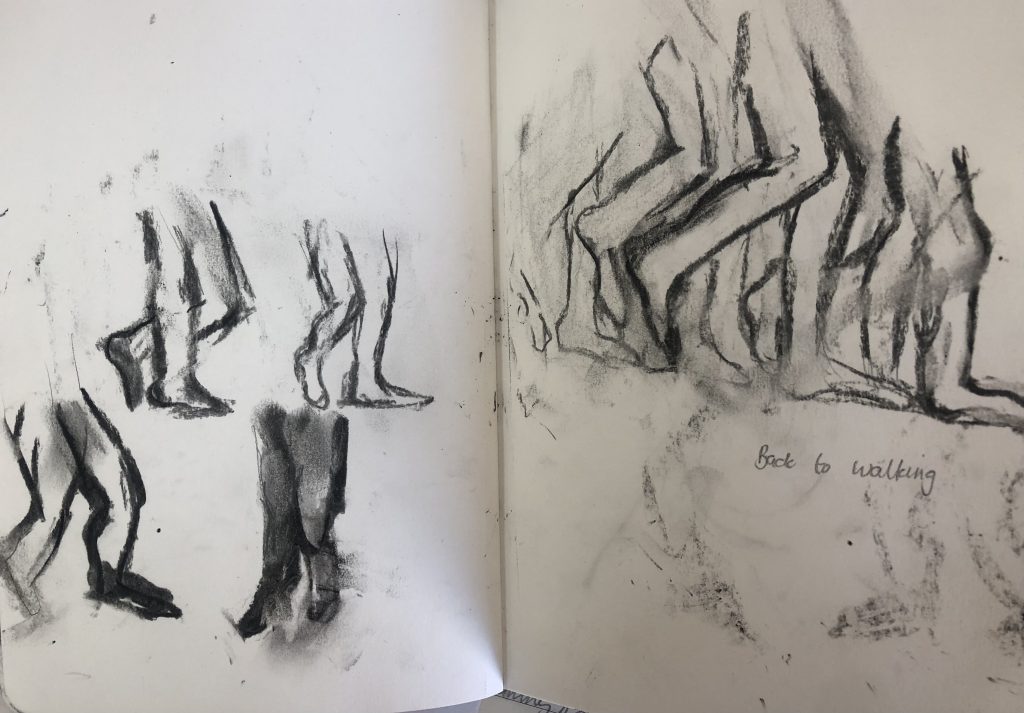
A few days later, I worked on a bigger scale and contemplated the drawing of feet moving as one walked. I looked at images on the internet and found inspiration to work with a drawing of my bare feet. I upscaled the drawing and placed my work on an easel.
I prepped white paper with charcoal powder and worked in portrait mode. I continued for a while and added more feet to the drawing.
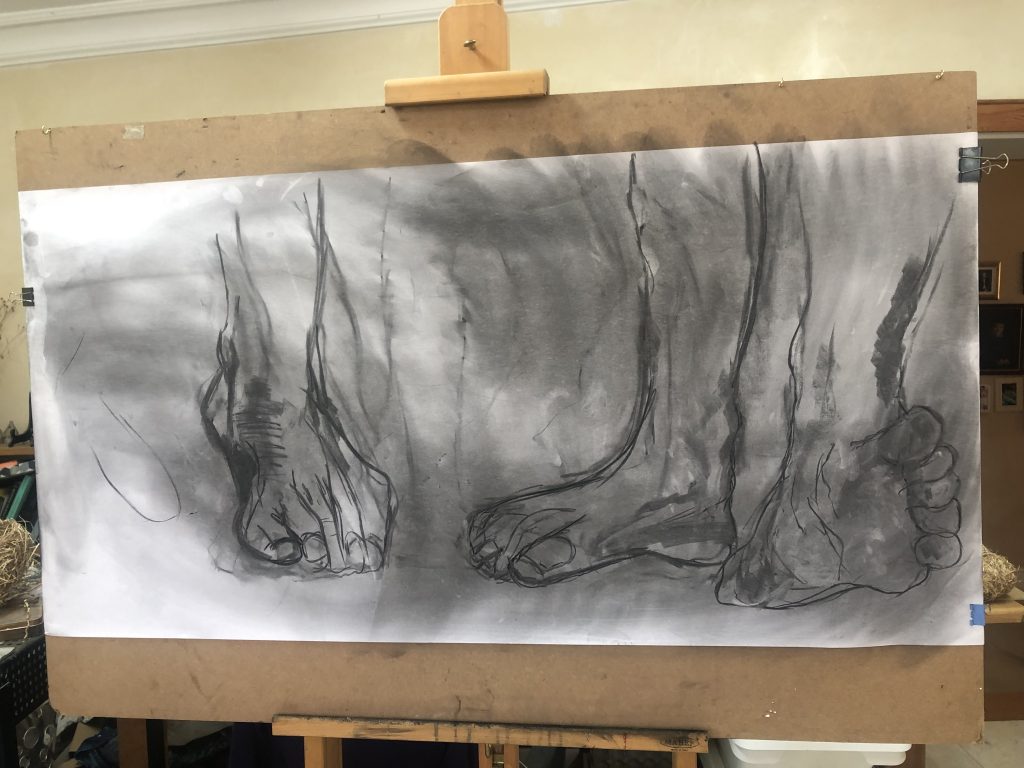
I liked the simplicity of this drawing and did not want to destroy it – but I also wanted to explore the process. I made another drawing of the same work – a copy to examine this drawing further – I worked with photographs of my own feet and found images, but looking back on the process, I feel the first drawing was less forced-free and explorative. I believe this is an important awareness of how when one tries to copy, you lose some of the spontaneity. I did, however, take longer with the second drawing as I looked at finding accuracy in the movement/position of the feet.
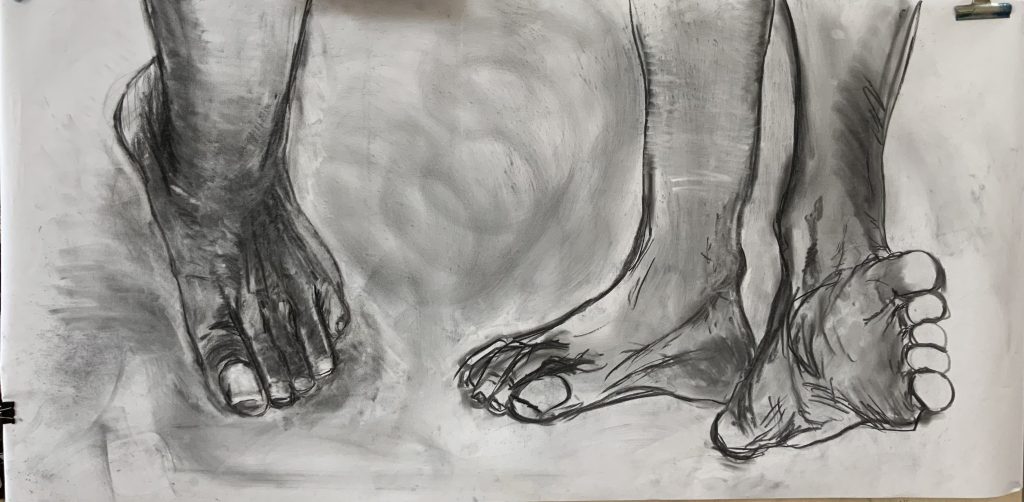
In the meantime, the first drawing was further explored by adding more feet/movement and playing with light/tonality over the next few hours of work.
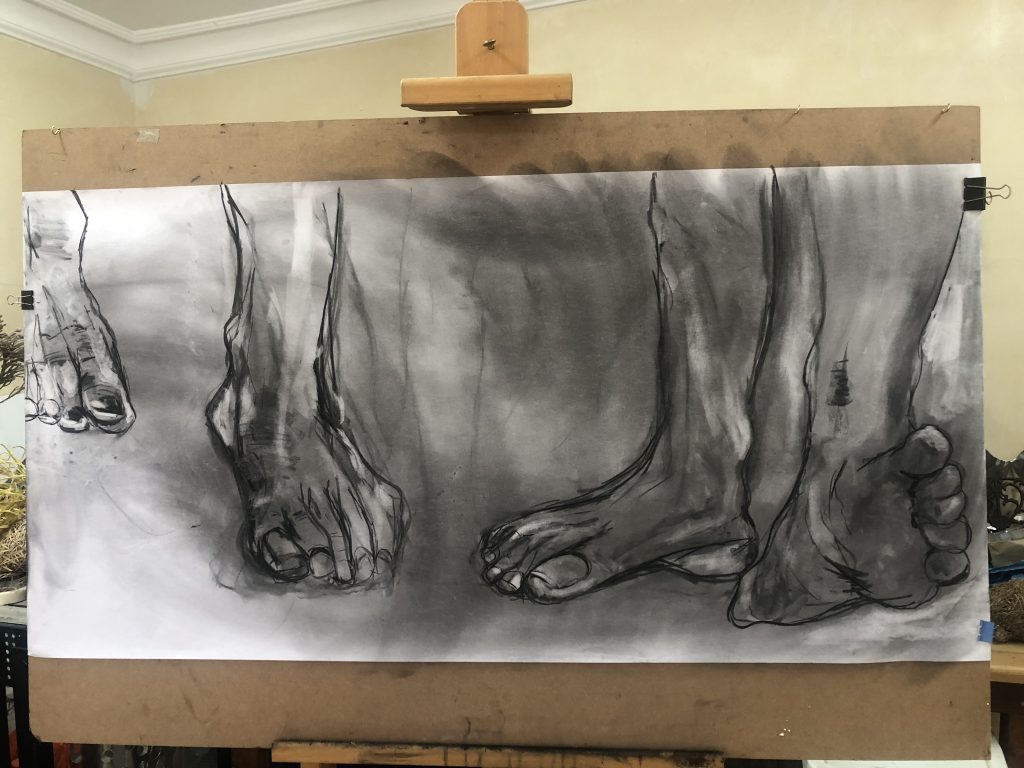
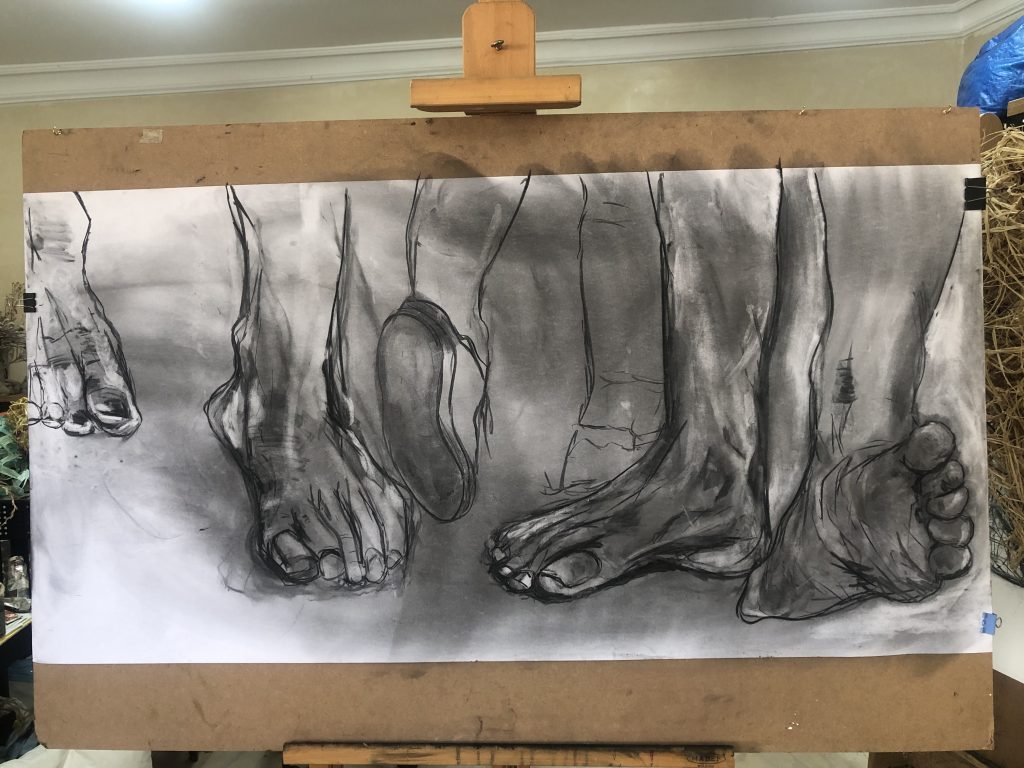
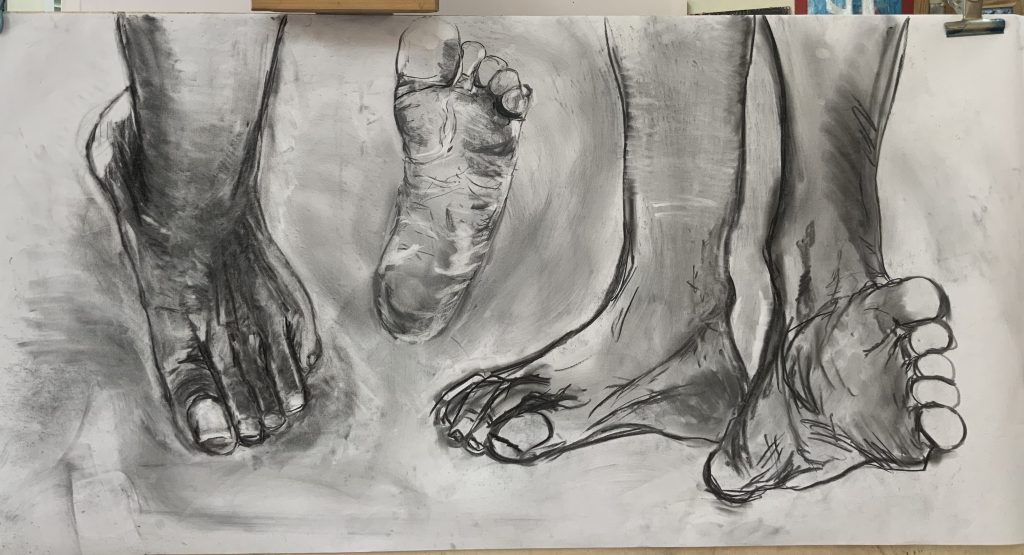
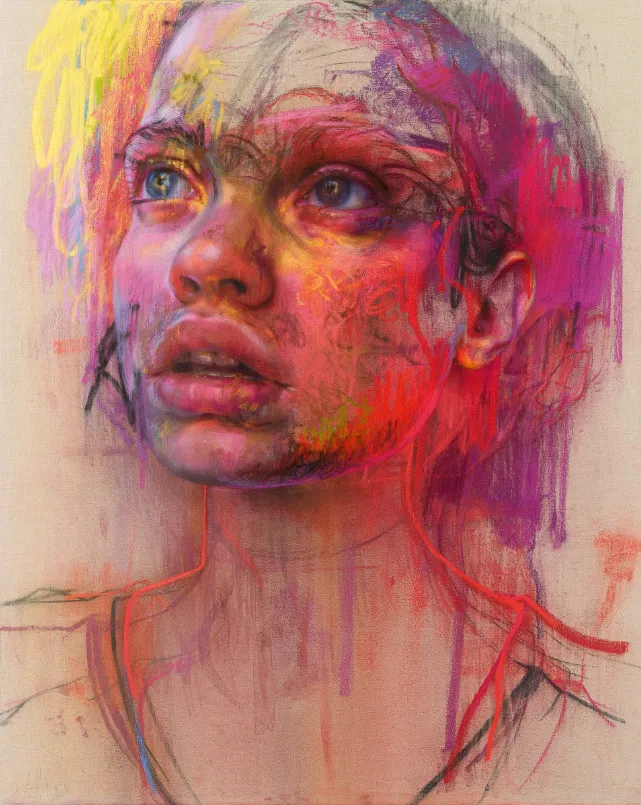
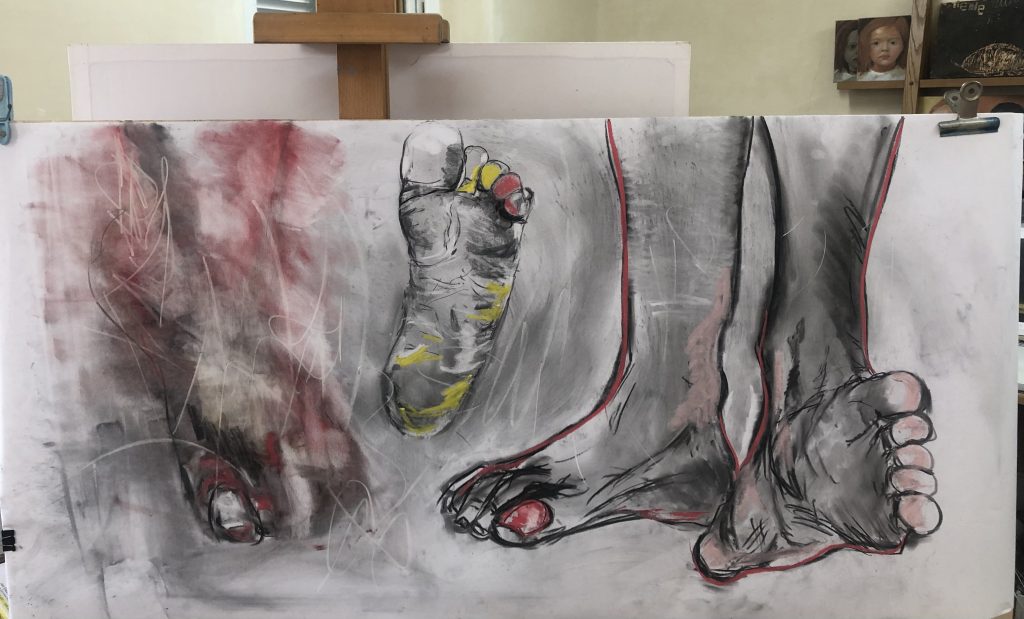
I do like the idea of mark-making in the work – walking leaves traces behind, connecting the body to the earth.
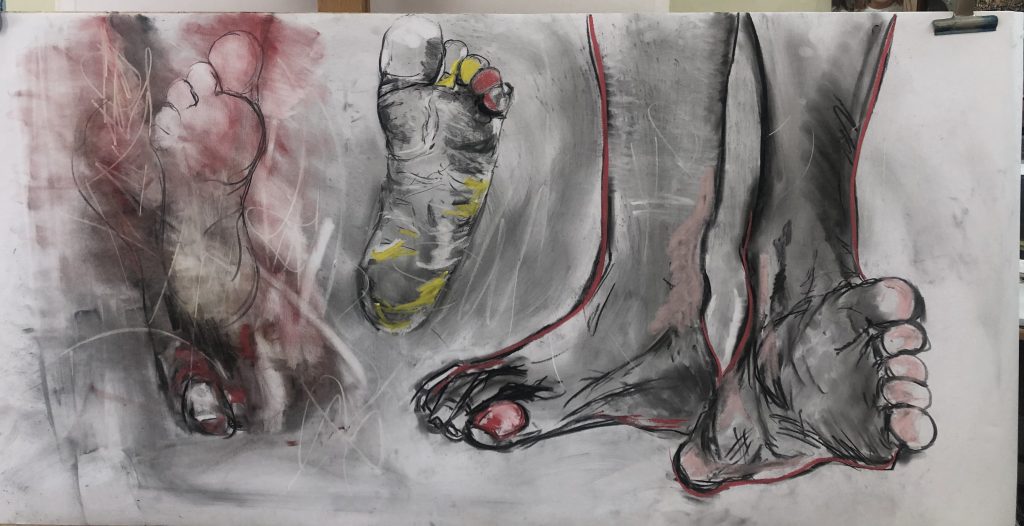
The drawing felt more energised with the colour and mark-making. By reworking, I was not using images to work from, so I could explore lines more freely and play between realism and abstraction. I am contemplating buying some oil bars to work with.
I am drawn to the accuracy of the above drawing, considering the size of this work. When I look at this work it becomes clear to me that despite this apparent chaos or blurring of boundaries, Saville’s actual practice is rooted in discipline and structure. It is also the place where the tension lies in her work. While the subjects of her paintings may seem to break free from constraints, Saville employs rigorous techniques of repetition and restriction in her process. Drawing feet/legs opened up my enjoyment of working figuratively and, obviously, the need to work accurately and focus on certain details within the work. I do feel I over-emphasised the drawing of the feet showing to walk forward (Right side) I would like to develop my skill. I realise my images should be more explored to have a more precise structure. I could take more photos to use when working and continue to explore figurative drawing. I think that more realism is need in drawing – use layering colour in the drawing as Saville does ?
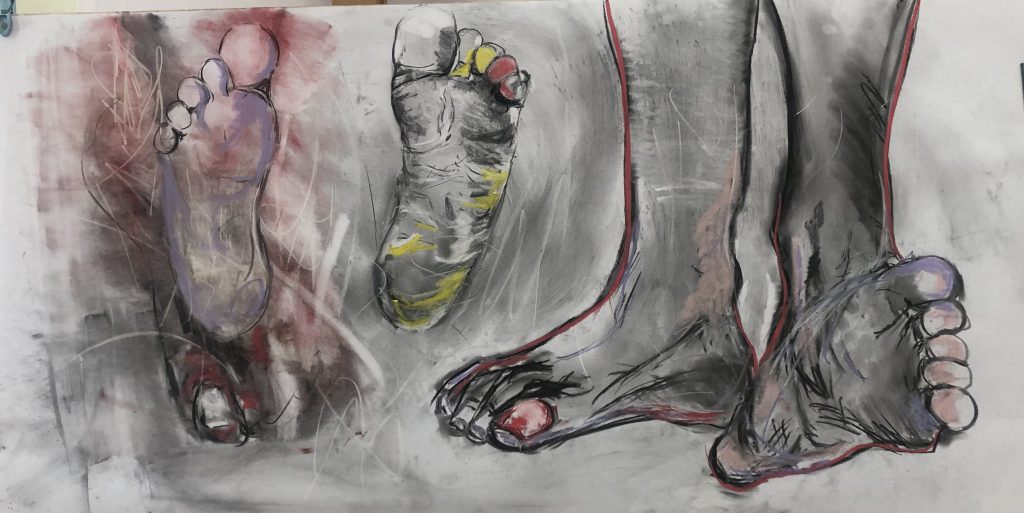
WORKING WITH WIRE
I want to add an exploration with wire. Making more work, which requires skill, is the process of using wire to create work, as seen by Ruth Asawa. I started with metal wire but soon found that copper wire is softer on my hands, which eases the making process. Below are two copper wire objects. During the making process, my focus was on creating the shape and learning to manipulate the material.I feel my skill with looping wire is developing, and I would like to explore more forms. I have discovered contemporary artists who also work with wire. The textile artist Gjertrud Hals works with different techniques, which I would also like to learn to use. From my research into her process, I understand that her process is described as knitting. l admire her work for its lightness and fragility.
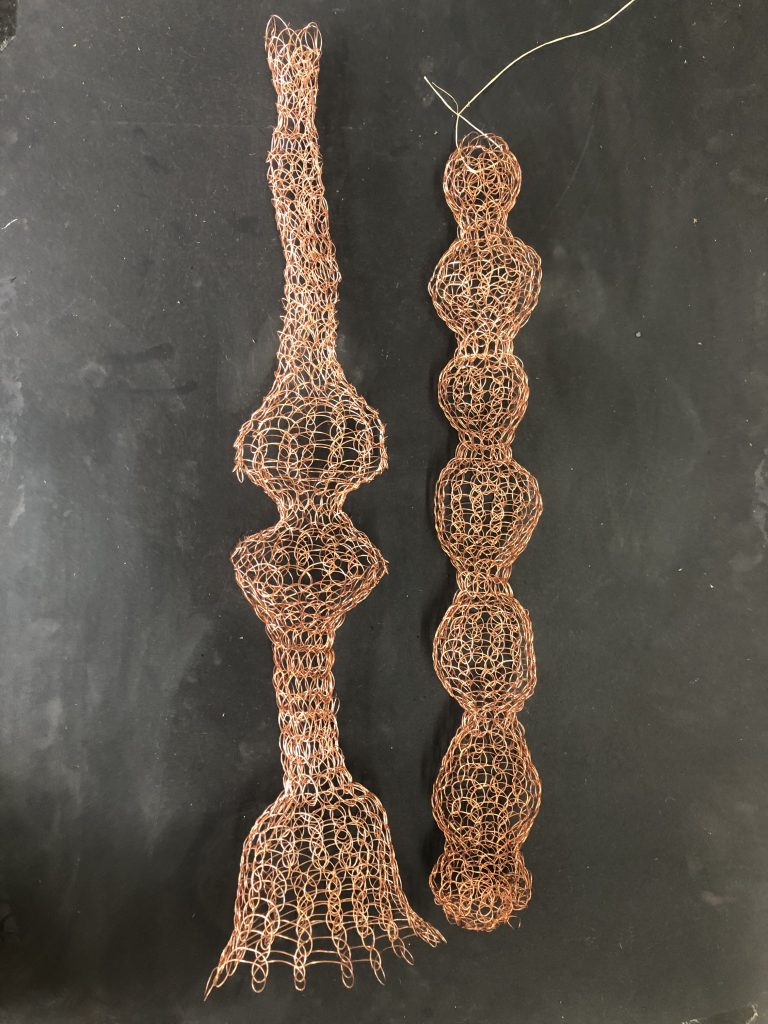
WHAT HAVE I LEARNED?
Working with wire has given me some insight into the use of lightness (sculptures are primarily heavy and solid) and made me think more about the role of space or negative space in my work. I need to keep practising drawing alongside my wire sculpture making.
The drawings made for this exercise were done over two weeks. I do not see it as final work and would like to get back to them over time.
List of Illustrations
Fig. 1 Saville, J. (2020) Prism. [pastel and charcoal on canvas] 200 × 160 cm. At: https://gagosian.com/quarterly/2020/12/01/interview-jenny-saville-painting-self/ (Accessed 30.05.2023)
Please use the sharing tools found via the share button at the top or side of articles. Copying articles to share with others is a breach of FT.comT&Cs and Copyright Policy. Email licensing@ft.com to buy additional rights. Subscribers may share up to 10 or 20 articles per month using the gift article service. More information can be found here.
https://www.ft.com/content/877e0655-e86f-4587-8ca3-19702bc5064c
RESEARCH TASK: CONNECTING IN AND OUT
Critical reflections and notes on Ifeoma U Anyaeji and Franz West are below. I have not read or known any of these artists.
After reading about their work I was asked to consider how I see me research underpinning and synthesising with with my practice and to considerwhat other research I might need to undertake to add compost to your fresh ideas? I do value the ‘freshness’ and boldness to follow your own creative instincts, which was notable in both these artists. I would say that even though I am sure both of them had to make a living out of their work, they are true to their own convictions and really innovative in the way they explored materials. Again I am reminded to Phylida Barlow.
Ifeoma U Anyaeji
Focus on the physical material object versus the material and the immaterial, the tangible and the intangible. She calls it ‘neo-traditionalism’, which refers to what is happening now – the ‘trend’. Her materials is new as it belongs to the moment/era in which she now works in. Her work is procedural and involves craft – I feel I find a link with my weaving of the e-loops. The threading takes longer in her case – the sculpture is faster to make, which is my experience with looping the wire before I can use it to make a sculpture or form. I do like her thoughts on when work stops and that that point is where the work finds value. Her materials come from communities around her – she needs this constant material feed.
Thinking about plastic as waste—in her culture before colonialism, waste was not encouraged. Upsycle is a new terminology. What I understand from her is more the fact that one is using the materials that are available in the present. I like her idea of referring to whatever tradition was at a time in the past as the contemporary of that moment. I enjoyed her opinion about not drawing out her work – she sees her making as original – the first thought.
Franz West
I found it hard to connect with his mostly paper mache objects and its ice cream colours, but in a way it also took me to the work of Phylida Barlow – but why like the one and not the other? Maybe his work is banal to me, although I think there is a playfulness in the work. It also reminds me of Jeffry Koons. A viewer would be fascinated by questions about materials he used. I read that he often worked with poor materials: papiermache, lumps of polystyrene, old flip-flops, cardboard tubes, a pile of hats, even his own childhood bed and his mother’s old washing machine, which he disassembled and remade into a kind of love-seat, painted in a nacreous industrial green. I think he was true to himself – making what he wanted to make. I do think his large outdoor sculptures are playful, could encourage communal interactionand did push boundaries of traditional sculpture.
Consider my findings, analysis, connections and proposals for future research
I feel one thing this course has ‘forced’ me to explore, namely materials, other that the traditional medium. I became much more comfortable to move towards these materials.